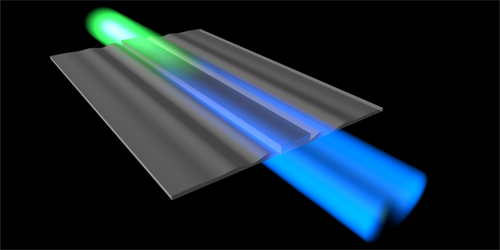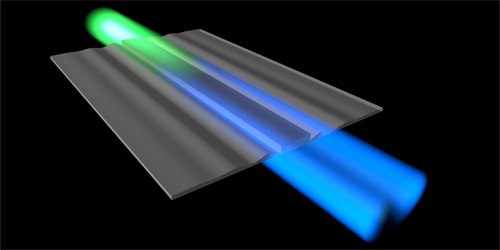Laser Light Cools Propagating Sound Waves
Photons hitting an object exert a force on that object that can affect its motion. Researchers can harness this force to reduce the vibrations, and thus the temperature, of a mechanical oscillator. This cooling effect, which has metrological applications like gravitational-wave detection, has so far been demonstrated only in optomechanical cavities, which enhance the coupling between light and the motion of the oscillator. Now, Nils Otterstrom of Yale University and colleagues have demonstrated an approach that bypasses the need for optical cavities, cooling acoustic vibrations—sound waves—that propagate in a silicon waveguide. Their approach could enable the reduction of vibrational noise in devices like laser gyroscopes, microwave filters, and optical memories.
To cool sound waves in a waveguide, Otterstrom and colleagues coupled light and sound via Brillouin scattering. In this effect, a photon scattered by the medium gains or loses energy by absorbing or emitting a phonon. If the balance is tipped in favor of phonon absorption for a propagating sound wave with a given velocity, photons can remove energy from the wave.
To maximize the photon-phonon interaction, the team used a 2.3-cm-long waveguide that confines both light waves and acoustic waves. They engineered the system to maximize the cooling effect for 6-GHz sound waves propagating in the opposite direction to the laser. The team launched a near-infrared laser beam into the waveguide and then monitored the scattered light emerging at one end of the waveguide. From the scattered light they inferred whether specific phonons gained or lost energy. They demonstrated that the dampening of the 6-GHz waves corresponded to a temperature decrease of more than 30 K from room temperature.
This research is published in Physical Review X.
–Matteo Rini
Matteo Rini is the Deputy Editor of Physics.





